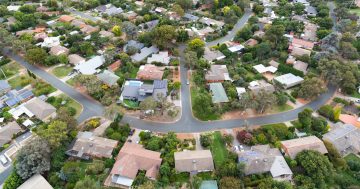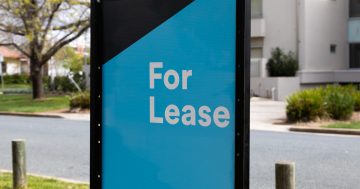
Canberra is now the most expensive city in Australia to rent.
Canberra now has the unenviable tag of being the most expensive city in Australia to rent a house, even beating Sydney in the process. Data released last week confirm what many renters in Canberra already know: while the capital undergoes an apartment boom, most of them are often prohibitively expensive, causing significant stress to many Canberrans.
The median rental price for a house in Canberra is now at $560 per week. While apartment rental here is not as expensive as Sydney, it is still pricey. The latest figures show that Canberra is now the second most expensive place in Australia to rent an apartment. So, for many families, it’s very hard to find a suitable property in Canberra that fits the household budget.
While these prices will hurt most budgets, if you are on a lower income, it is unaffordable. With the weekly minimum wage sitting a bit over $700, there’s most of your money gone on rent. Even with income benefits such as Newstart or Youth Allowance, or even Commonwealth Rent Assistance, chances are your housing costs are likely to be more than your payments. This means you are likely to be in poverty and at risk of homelessness.
Up until recently, it’s been hard to paint the picture of housing affordability in Canberra because of how affordability is measured. Generally, when ACT rents are compared with other places in Australia, the high medium incomes of ACT households hide the problems. The general consensus was that since many of us earn high wages, it looks more affordable than it is.
We have now reached a point, however, where this no longer masks the issue. Now rents are so high that even when the high median household incomes (around $108,000 per household compared to around $75,000 across Australia) are factored in, many Canberra suburbs are unaffordable. The Rental affordability index (RAI) produced by National Shelter, Community Sector Banking, The Brotherhood of St Laurence, and SGS Economics reports regularly on the affordability of rents across Australia. It found that inner city and suburbs in the ACT had moved from a rating of moderately unaffordable to unaffordable.
We generally measure housing stress by identifying if you must pay more than 30 per cent of your income on housing. This is why income-based rent caps payments at 30 per cent of your income or market rent (whichever is lower). The November RAI report provides a startling insight into what this means if you are a low-income household renting in the private market. It found as a single person on Newstart, you will likely need to allocate 114 per cent of your income to pay the rent. As a single pensioner, you need to put 75 per cent of your income towards rent. As a single parent working part-time you need to contribute 58 per cent, and if you are part of a couple on pensions, 47 per cent of your income needs to go to rent. As a hospitality worker, it’s 38 per cent, a student share house, 34 per cent, and for a couple receiving a minimum wage, it’s 33 per cent.
We are not talking about small numbers of people. The last cost of living report released by the ACT Council of Social Service reported that there were 34,543 people living in poverty in the ACT in
2015-16 (representing 9.2 per cent of the total ACT population). It highlighted the fact that almost 1,600 people experienced homelessness in Canberra on census night in 2016. It also noted that almost a third of low-income rental households in the ACT were experiencing rental stress (33.8 per cent, or 8,672), while that rate rose significantly for private rental households (47.8 per cent).
This all highlights the fact that we have reached the crisis point that many people have been warning of for some time. The question now becomes what to do about it.
There are obviously issues of supply but this does not tell the whole story. Despite suggestions that there is an oversupply in units, most of these units still demand high rents. We may see some prices drop in the next period, but it’s hard to imagine it will help those at the lower end of the market. Many future apartment developments seem to be pitched to the middle and top end of the market. There continues to be a problem when we prioritize housing assets as a wealth generation vehicle rather than a way to provide a home for people.
Clearly, this is an issue where we need Government leadership and action. It was good to see the issue of affordable rent being identified in the recently released ACT Housing Strategy. There were a number of actions identified to address this issue, including growing and diversifying the community housing sector, increasing the supply of affordable rental private properties, and recognising the need for targeted programs to increase the supply of affordable housing for at-risk groups.
There have also been some small initial actions. For example, Community Housing Canberra was recently awarded a grant to establish a not-for-profit real estate agent. It is clear, however, that most strategies will take time and require significant resources to actually deliver more affordable rental properties.
Given the crisis we are now facing, we need to act now to help people who are struggling. People on lower incomes and unable to access public housing must have rental options that are affordable. They need support to ensure they do not become homeless. We don’t want to be in a situation where people on lower incomes can’t afford to live here.
What are your ideas about how to create more affordable rental in Canberra?
Rebecca Vassarotti is a board member of Community Housing Canberra, a community housing organisation focused on delivering affordable housing. She also sits on the management committee of the Early Morning Centre, a homelessness service.





















